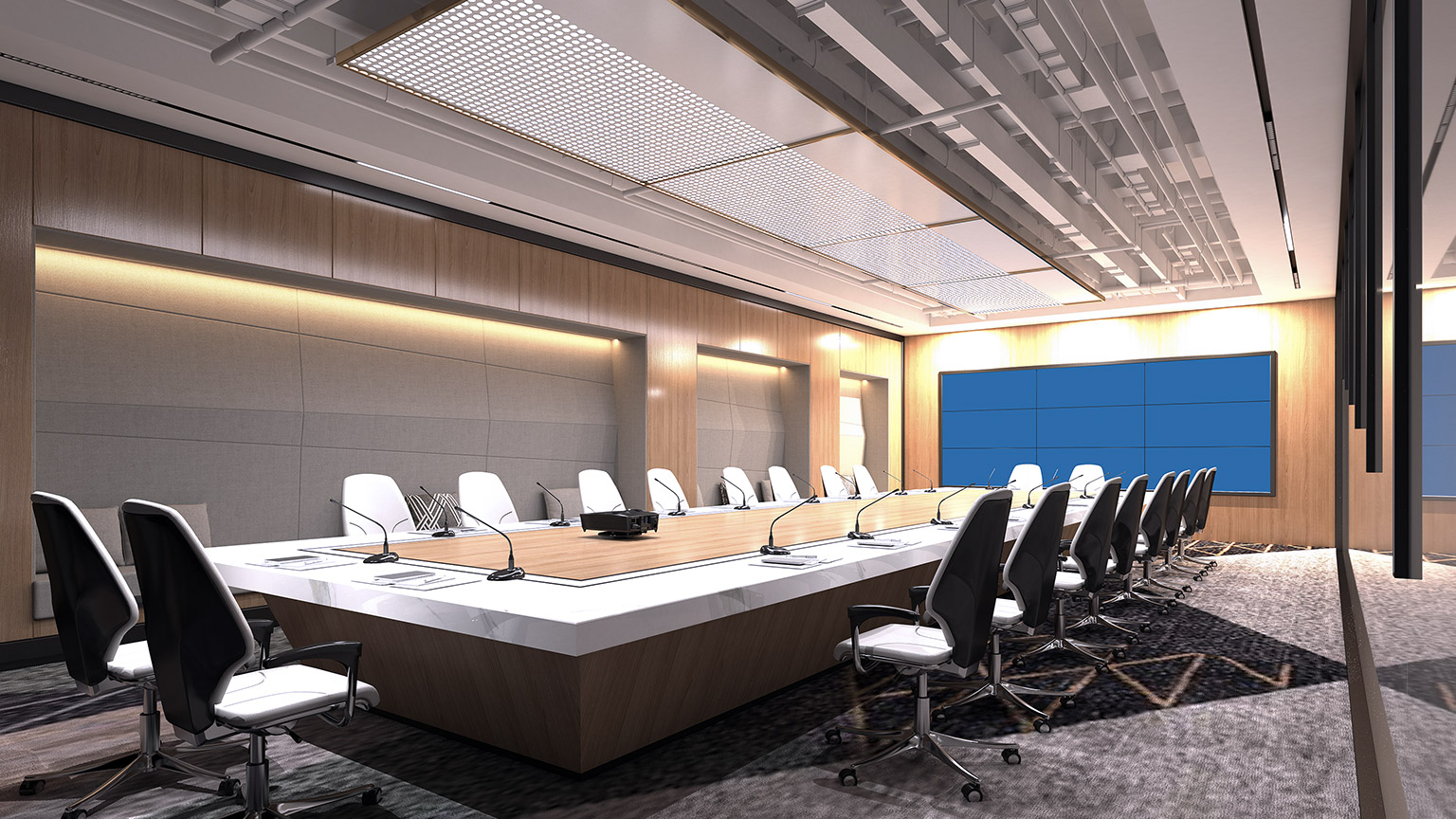| Day One | Day Two | Day Three | Day Four | |
|---|---|---|---|---|
| Course Content | Mains Cables. Select and install cables for practical tasks. | Electrical fittings and components. Ratings and environmental suitability for electrical fittings. | Mounting and support requirements for electrical fittings and components. | Basic lighting systems. Electric lighting principles and lighting terms. |
| Self-directed Learning | Mains Cables. Select and install cables for practical tasks. | Strength and fire ratings of building materials exercise. | Certificate of Compliance and Electrical Safety Certificate. | Ambiant lighting, task lighting, and accent lighting used in a space. |
In order for you to gain the most value from your qualification and to prepare you for your assessment and the industry, make sure you complete all of the online and SDL tasks.
What we're covering:
- purpose of mains
- mains cable selection
Consumer mains and sub-mains are both electrical cables that are part of a building's electrical distribution system, but they serve different purposes.
Consumer mains or simply mains, are the primary electrical cables that connect a building's main distribution panel to the local utility grid, typically at a high voltage level. These mains are responsible for delivering power to the entire building and are designed to handle high current loads.

Note
Consumer mains and consumer cables are not the same thing. Consumer mains are the primary electrical cables that deliver power to a building, while consumer cables are the secondary cables that distribute power to individual circuits or loads within the building.
Submains, on the other hand, are electrical cables that branch off the main distribution panel and provide power to specific areas or zones within the building. They carry lower voltages than the mains and are used to distribute power to specific circuits or loads in a more efficient and organised manner. Submains can be used to connect multiple panels or switchboards within a building and can also be used to distribute power to remote locations or outbuildings. They are protected from both over-load and short circuit current at the main distribution board.
Common cables used for mains cables include:
- PVC-insulated cables - These are commonly used for low voltage applications, where the current is relatively low. Flat PVC sheathed cable with two to four copper conductors is the most commonly used cable in New Zealand for fixed wiring in buildings.
- XLPE-insulated cables - These cables are used for high voltage applications, such as in power transmission lines or industrial settings.
- Rubber-insulated cables - These are commonly used for outdoor or harsh environmental conditions, as they offer excellent resistance to temperature changes, moisture, and abrasion.
- Armoured cables - These cables have an additional layer of protective armour, usually made of galvanized steel or aluminum, to provide additional protection against physical damage and moisture. Armoured cables are used for underground and outdoor installations where protection against mechanical damage is required.
- Non-metallic sheathed cables - These are commonly used in residential wiring applications, such as for wiring outlets and light fixtures.
Mains Cable Selection Process
Maximum Demand
Maximum demand during cable installation is determined by calculating the maximum amount of electrical power that is likely to be required (under normal operating conditions) by the electrical system or equipment that the cable is intended to serve. This helps to ensure that the cable is able to carry the required electrical load safely and efficiently without being overloaded.
To determine the maximum demand, the following factors are typically considered:
- Electrical Load: The maximum demand is calculated based on the total electrical load that the cable will be required to carry. This includes the power consumption of all the electrical equipment and appliances that will be connected to the cable.
- Cable Length: The length of the cable and the resistance of the conductor material used also affect the maximum demand calculation. Longer cables have higher resistance, which results in higher voltage drop and less current delivered at the end.
- Ambient Temperature: The ambient temperature of the location where the cable will be installed also plays a role. Higher temperatures can cause the cable to heat up and increase its resistance, reducing the amount of current that can be safely carried.
- Voltage: The voltage level of the electrical system also affects the maximum demand calculation. Higher voltage systems can carry more power than lower voltage systems, so the maximum demand for a cable in a high voltage system will be higher than for the same cable in a low voltage system.
- Future Expansion: The maximum demand calculation should also consider the possibility of future expansion or growth of the electrical system, which could increase the load on the cable
Your selection criteria for mains cable should also include these factors:
- Voltage rating: The cable must be rated for the voltage of the electrical system in which it will be used. In New Zealand, the standard voltage is 230-240 volts AC
- Current carrying capacity: The cable must be able to safely carry the maximum current that will flow through it. The current carrying capacity is determined by the cable's cross-sectional area (gauge) and is specified by the manufacturer.
- Number of cores: The cable must have the appropriate number of cores for the application. For example, a three-core cable is typically used for most electrical applications in New Zealand, with one core for the live conductor, one for the neutral conductor, and one for the earth conductor.
- Insulation and sheathing: The cable must be insulated to prevent electrical shock and must have a protective sheath to prevent damage to the cable. The insulation and sheathing materials used must comply with local standards and regulations.
- Temperature rating: The cable must be able to withstand the temperatures it will be exposed to during use. In New Zealand, cables are typically rated for temperatures up to 75°C or 90°C.
- Environmental rating: The cable must be rated for the environment in which it will be used, such as indoor or outdoor use, exposure to moisture or chemicals, and exposure to UV light.
- Compliance with standards: The cable must comply with local standards and regulations. AS/NZS 3008:2017 Electrical installations - Selection of cables should be used in conjunction with other standards and regulations, such as AS/NZS 3000 (the Wiring Rules), Electricity (Safety) Regulations 2010 and AS/NZS 5000.1 (the Cable Standard).
- Length of cable: The length of the cable should be considered to ensure it reaches the electrical socket without being too long and creating a trip hazard.
Read through the following examples of selecting a cable. Make sure you understand what is happening at each step. Check any calculations as you read to ensure that you get the same answers as the examples.
Example 1
Select an underground mains cable for a single-phase (230V) domestic dwelling in New Zealand that has a maximum demand of 65A. Cable length is 20 metres and the cable must have no more than 3.5% volt drop from the point of supply.
Using an online voltage drop calculator with the given parameters, we can determine that the maximum allowable voltage drop is 8.05 volts (3.5% of 230V).
To find a suitable cable, we can refer to the New Zealand Electrical Code of Practice for Electrical Wiring Work in Domestic Premises (AS/NZS 3008.1.1:2017)*, which provides tables for selecting cables based on voltage drop and current capacity.
Based on the maximum allowable voltage drop of 8.05 volts, we can use Table 4.5.1 of the code to find suitable cables sizes for a 20 metre run.
For a maximum demand of 65A, the minimum cable size required to meet the voltage drop limit is 25 mm2 copper. This cable isze has a voltage drop of approximately 5.1 volts per 100 metres, which is well below the allowable limit for the given parameters.
Therefore, a suitable underground mains cable ofr a single-phase (230V) domestic dwelling in New Zealand with a maximum demand of 65A and a cable length of 20 metres is a 25 mm2 copper cable.
A suitable 25 mm2 copper cable for direct burial would be a 2-core or 3-core XLPE (Cross-Linked Polyethylene) insulated cable.
*Table 1.5 of the code provides cable sizes for given maximum voltage drop and maximum current ratings for various installation methods, such as conduit, trunking, or direct burial.
*Table 4A of the code provides information on cable types and sizes for various installation methods, including open cable trays, closed cable trays, and direct burial.
Example 2
Select a three phase (400V) industrial building submain cable with a maximum current requirement of 105A per phase. The cable will be run in an open cable tray. The selected cable needs to have a volt drop of less than 1.75 mV/A/m.
Using an online voltage drop calculator with the given parameters, we can determine that the maximum allowable voltage drop is 183.75 volts (1.75 mV/A/m x 105A x 100m).
To find a suitable cable, refer to the NZCP for Electrical Wiring Work (AS/NZS 3008.1.1:2017), which provides tables for selecting cables based on voltage drop and current capacity.
Based on the maximum allowable voltage drop of 183.75 volts, we can use Table 1.5 of the code to find suitable cable sizes ofr a 100 metre run.
For a maximum current requirement of 105A per phase, the minimum cable size required to met the voltage drop limit is 120mm2 copper. This cable size has a voltage drop of approximately 1.5 mV/A/m, which is allowable limit for the given parameters.
For an open cable tray installation, we can refer to Table 4A of the code to find suitable cable types. Based on the current rating of 105A per phase, a suitable type would be a 4-core XLPE (Cross-Linked Polyethylene) insulated cable with a steel wire armour for mechanical protection.
Therefore, a suitable three-phase (400V) industrial building submain cable with a maximum current requirement of 105A per phase, and a maximum volt drop of 1.75 mV/A/m for an open cable tray installation is a 120mm2 4-core XLPE insulated copper cable with steel wire armour.
Self-directed Learning
Work through this example of selecting a sub-main cable, completing the boxes as you go. Bring your completed worksheet to your next class for your tutor to check.
Solution
To determine the appropriate sub-main cable for this installation, we need to consider the following factors:
- Maximum Demand: The maximum demand for the property is 62.5A. We can use this value to determine the current that the cable must be able to carry.
- Distance: The distance between the main switchboard and the sub-board is 18 meters. We need to consider the voltage drop along this distance.
- Maximum Voltage Drop: The maximum allowable voltage drop for the installation is 3%. We need to ensure that the voltage drop along the cable is less than this value.
- Short Circuit Allowance: The short circuit allowance for the installation is twenty times the maximum demand. We need to ensure that the cable can withstand this level of current
Based on these factors, determine the appropriate sub-main cable. Complete your answers on the worksheet.
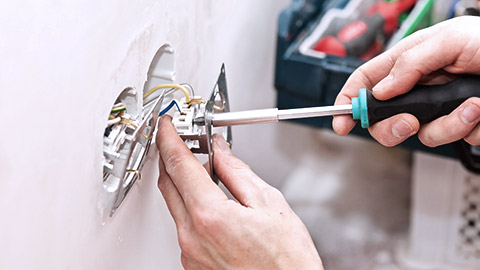
What we're covering:
- common types of fittings
- selecting the right fitting
Electrical fittings are a very important aspect of electrical work and electrical safety.
The Electricity Act 1992 defines electrical fittings as meaning:
“Everything used, or designed or intended for use, in or in connection with the generation, conversion, transformation, conveyance, or use of electricity.”
Note
“Accessories” is an alternative name for fittings. You will encounter both terms in the electrical industry.
There are many types of electrical fittings, but some of the most common ones include:
- Power points or socket outlets.
- Switches.
- Light fittings to hold and connect light bulbs.
- Ceiling roses.
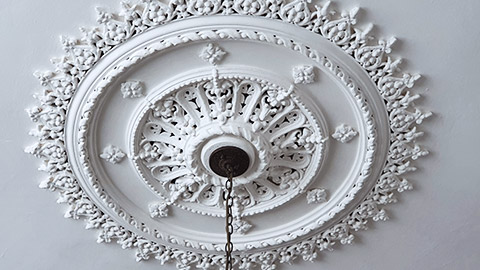
- Circuit breakers and fuses to protect electrical circuits.
- Electrical conduit to protect and route electrical wiring.
- Cable trays: These are used to support and organize cables.
- Junction boxes to house electrical connections.
- Electrical connectors to connect wires and cables together.

- Cable clips and ties to secure cables to walls and surfaces.
- Permanent connection units.
- Distribution boards to distribute electricity throughout a building.
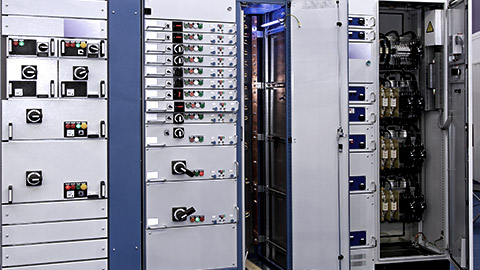
- Flexible cords connected to any permanent connection unit, ceiling rose, or cord grip lamp-holder.
Exercise 30
Test your understanding of electrical fittings on these multichoice questions.
Selecting the Right Fitting
The selection criteria for an electric fitting depends on the specific application, but some common factors to consider when selecting an electric fitting are:
- Electrical specifications: The electrical specifications of the fitting, such as voltage, current, and frequency, must match the requirements of the installation. Current limits and voltage limits determine the maximum amount of current or voltage that the fitting can safely handle.
AS/NZS 3000 4.1.2. specifies the minimum requirements for the selection and installation of electrical equipment, including appliances and accessories, to satisfy Part 1 of the Standard.
Take into consideration any external influences such as thermal insulation in ceiling spaces and walls when you are making your selection of fittings (see NZECP 55).
- IP rating: You will recall the Ingress Protection rating is used to indicate the level of protection that an electrical fitting provides against the intrusion of foreign bodies (dust, dirt etc) and moisture. For example, a high IP rating is required for electrical fittings installed in outdoor areas or near water sources to prevent damage and ensure safe operation.
AS/NZS 3000 6.2. covers the general requirements for electrical installations in damp locations, providing guidance on the types of fittings suitable for damp locations and the minimum distances that must be maintained between electrical fittings and water sources to prevent electrical shock.

AS/NZS 3000 6.3. covers specific requirements for electrical installations in particular damp locations, such as bathrooms, showers, and swimming pools, with more detailed guidance on the types of fittings suitable for each location. It also specifies the requirements for electrical bonding and earthing in these locations.
The Electrical (Safety) Regulations 2010, Part 4 deals with the installation of electrical fittings in damp locations. A damp location is defined as an area that is subject to moisture, such as a bathroom, shower room, laundry room, or swimming pool area. The Regulations also specify the minimum clearance distances between electrical fittings and water sources, such as taps, sinks, and showers.
- Type of switch: An ordinary switch turns the power on or off to a particular electrical device or system. It is typically used to control lighting, fans, or other types of appliances. When an ordinary switch is turned off, it simply breaks the connection between the power supply and the device or system.
An isolator switch is used to completely isolate a circuit or electrical system from the power supply. It is designed to provide a physical break in the circuit, which can be useful for maintenance or repair purposes. When an isolator switch is turned off, it not only breaks the connection between the power supply and the device or system, but it also physically separates the circuit from the power supply.
Isolator switches are typically designed to handle higher currents and voltages than ordinary switches because they are often used to isolate high-power equipment, such as motors or industrial machinery.
Choosing switches suitable for circuit isolation is important because improper isolation can result in electrical shock or damage to equipment. Switches should be rated for the voltage and current of the circuit and should have appropriate mechanical and electrical interlocks to prevent accidental switching.
- Position of switches: The position of switches in a circuit also determines the type of switch fitting installed because different types of switches are designed for specific applications and installation requirements. They should be positioned to allow for easy access in case of emergency or maintenance, and they should be clearly labelled to indicate their function. In addition, switches should be positioned in a way that prevents accidental or unauthorised operation, especially for critical systems such as emergency lighting or fire alarm systems.
An intermediate switch, for example, is a type of switch used to control a single lighting circuit from three or more different locations. In a multi-way switching system, the intermediate switch is placed between two two-way switches and is used to control the same lighting circuit. When the intermediate switch is in the "on" position, it allows current to flow through the circuit and turn the light on. When it is in the "off" position, it breaks the circuit and turns the light off. In a long hallway with several entry points, intermediate switches can be installed at different points along the hallway, allowing the lights to be turned on or off from any of these locations.
Also take into account these factors in your selection of fixtures:
- Compatibility: The fitting must be compatible with other components of the electrical system, such as cables, circuit breakers, and switches.
- Safety: The fitting must meet relevant safety standards and regulations to ensure safe operation.
- Durability: The fitting must be able to withstand the environmental conditions and mechanical stresses of the installation location.
- Cost: The fitting must be affordable and provide good value for money, taking into account its lifespan, maintenance requirements, and energy efficiency.
- Ease of installation: The fitting should be easy to install and connect to other components of the electrical system.
- Aesthetics: The fitting should be aesthetically pleasing and fit in with the overall design and style of the building or installation.
- Wiring: The wiring should be of the correct size, type, and insulation for the electrical fitting or accessory.
- Access: You need to consider how easy it will be to access the electrical fitting or accessory for maintenance or repairs.
- Code Compliance: You need to ensure that the installation complies with all applicable electrical codes and regulations.
- Grounding: You need to ensure that the electrical fitting or accessory is properly grounded to prevent electrical shock.
Exercise 31
Are the following statements true or false? Then match the following electrical fittings with their appropriate use.
Self-directed Learning
Locate the answers to the questions in this worksheet by referring to the appropriate standard and email your answers to your tutor.
What we're covering:
- Section 3.9 AS/NZS 3000:2018
- Suitability of Materials
Section 3.9 of AS/NZS 3000:2018 provides detailed guidance on the mounting and support requirements for electrical fittings and components, with a focus on ensuring that they are installed in a safe, robust, and secure manner, and that they are protected from mechanical damage and excessive heat.
Specifically, section 3.9 of this standard outlines the following mounting and support requirements:
- All fittings and components must be securely mounted and supported so as to prevent displacement or mechanical damage during installation, operation or maintenance.
- The mounting and support arrangements must be robust and suitable for the intended purpose of the fitting or component.
- The mounting and support arrangements must not place undue stress on any part of the fitting or component.
- Fittings and components must be supported in a manner that will allow adequate ventilation to prevent excessive heat build-up.
- Where necessary, protective devices such as shrouds must be used to protect fittings and components from mechanical damage.
- Fittings and components must be securely fastened to their supporting structure, and this may involve the use of suitable brackets, clips, or other fastening devices.
- Where a fitting or component is to be mounted on a surface that is not rigid, additional support may be required to prevent it from becoming loose or damaged.
Suitability of Building Materials for Mounting Electrical Fittings
It is important to know about the strength and fire resistance of a building material when installing electrical fittings because electrical systems can generate heat and create potential fire hazards. If the building material is not strong enough to support the weight of the electrical fittings, there is a risk of them falling off and causing damage to the electrical system or injuring someone nearby. Similarly, if the building material is not fire-resistant, it can catch fire and spread quickly, posing a significant risk to the building's occupants.
Common building materials used in New Zealand can vary in their strength of mounting and fire resistance. Here are some comparisons:
- Timber: Popular for building due to its availability, strength, versatility, and relatively low cost. It is often used for framing, flooring, cladding, and decking. When properly treated and installed, it can be strong enough to support heavy loads. and it can also be strengthened by laminating or cross laminating the wood. Timber is highly combustible and can contribute to the spread of fire however treatment with fire-resistant chemicals improves its fire resistance.
- Concrete: Concrete is a strong, durable, and fire-resistant material commonly used for foundations, walls, and flooring. It can withstand heavy loads and has good fire resistance however concrete is heavy and requires specialised equipment for installation. It is relatively low-cost, easy to work with, and has good thermal properties.
- Masonry: Masonry, which includes brick, stone, and concrete blocks is another strong and durable building material with good fire resistance. It is also relatively low-maintenance and can provide good insulation, however, it can be expensive, heavy and it may require specialised skills to install.
- Steel: Steel is a strong and durable building material that can support heavy loads and has good fire resistance. It is also relatively lightweight and commonly used in structural elements such as beams, columns, and frames. It is lightweight and easy to install, however steel can be expensive compared to other materials.
- Plaster board: Plaster board, also known as GIB, gypsum board, or drywall, is a lightweight and cost-effective material used for interior walls and ceilings. It is easy easy to work with and can be cut to size, but it is not as strong as other building materials and may not be suitable for heavy loads. Plasterboard has poor fire resistance and may require additional fire protection measures.
- Polystyrene is a synthetic polymer material commonly used for insulation, cladding, and other construction applications. While it can be used for insulation or as a lightweight cladding material, it has relatively low strength and is not typically used for structural elements in buildings. Polystyrene is a thermoplastic material, which means it can melt and ignite under high temperatures. Polystyrene foam insulation is typically treated with fire-retardant chemicals to improve its fire resistance. However, even with these treatments, it may still burn and emit toxic gases when exposed to fire.
- In summary the following table compares common building materials used in New Zealand, based on their strength of mounting and fire resistance:
Consruction Material Strength of Mounting* Fire Resistance** Timber Good Poor to Fair Concrete Excellent Excellent Masonry Excellent Excellent Steel Excellent Good GIB Plasterboard Poor Fair Polystyrene Poor Poor Glass Poor to Fair Poor to Fair
* Strength of Mounting refers to how well a material can hold weight and resist forces, such as wind and earthquakes.
** Fire Resistance refers to how well a material can resist fire and prevent it from spreading.
Exercise 32
Study the table comparing strength and fire resistance properties of different building materials then answer the questions in the worksheet.
| Material | Strength Rating | Fire Resistance Rating | Combined Rating |
|---|---|---|---|
| Concrete | 8 | 9 | |
| Timber | 7 | 7 | |
| Brick | 6 | 8 | |
| Plasterboard | 3 | 5 | |
| Steel | 9 | 8 |
Self-directed Learning
Continue with the task in Exercise 32.
What we're covering:
- electric lighting principles
- definitions of lighting terms
- types of lighting
Electrical Lighting Principles
Light is electromagnetic radiation (EMR) within a certain portion of the electromagnetic spectrum. The word usually refers to visible light, which is visible to the human eye and is responsible for the sense of sight. Visible light covers the wavelength range from approximately 380 nm (nanometres) to 760 nm, or 3.8 × 10−7 to 7.6 × 10−7 m, between the infrared (with longer wavelengths) and the ultraviolet (with shorter wavelengths). The eye discriminates between different wavelengths in this range by the sensation of colour. Blue and violet correspond to the short wavelengths, red to the long, and yellow and green to the middle of the visible range of wavelengths.
In physics, the term light sometimes refers to electromagnetic radiation of any wavelength, whether visible or not. In this sense, gamma rays, X-rays, microwaves and radio waves are also light. However, for our purposes, the term light applies only to visible radiation.
Definitions of Lighting Terms
- Luminous flux: This refers to the total amount of visible light emitted by a light source in all directions. It is measured in lumens (lm) and indicates the brightness of a light source. The higher the number of lumens, the brighter the light source.
- Luminous intensity: This refers to the amount of light emitted by a light source in a particular direction. It is measured in candelas (cd). One candela is equivalent to one lumen per steradian (lm/sr), where the steradian is a unit of solid angle. To measure luminous intensity, a device called a photometer is used. A photometer consists of a light sensor (usually a photodiode or photomultiplier tube) that is sensitive to visible light, and a display or recording device that displays or records the measured luminous intensity.
- Illuminance: This refers to the amount of light that falls on a surface per unit area. This is one of the most commonly used measurements of light and indicates the brightness of the illuminated surface. It has the symbol E and is measured in lux (lx), where 1 lux = 1 lm/m2. Illuminance depends on both the luminous flux of the light source and the distance between the source and the illuminated surface. Natural illumination is daylight from the sun as the source while artificial illumination comes from an artificial light source.
- Luminance: This refers to the amount of light that reaches our eyes from a surface. Luminance is different from illuminance in that it measures the light emitted or reflected by the surface, not the light falling on the surface. Luminance is measured in candelas per square meter (cd/m²) and indicates the brightness of the surface. If we have two light sources per unit of apparent surface area with the same luminous intensity and one of them has a smaller surface area, it will appear brighter. Luminance is measured using a lux meter is used, which converts the light signal into an electrical signal that is later amplified and allows the reading of intensity on a calibrated lux scale. It is important that before measuring, the device is calibrated and marked 0.
- Glare: Glare is excessive contrast of brightness or colour in the visual field. Excessive luminance of an object in relation to its background is a common source of glare. Potential glare in lighting installations can be minimised by using indirect lighting sources, fixtures with baffles or louvres, lighting controls such as dimming etc.
- Colour Temperature: The colour temperature of a light source refers to its perceived warmth or coolness. Light sources with a lower colour temperature (around 2700-3000K) appear warm and yellowish, while those with a higher colour temperature (5000-6500K) appear cool and bluish. Understanding colour temperature is crucial when selecting lighting for different environments, such as warm colours for residential spaces and cooler colours for commercial settings.
Exercise 33
1. Match the following terms to their correct definitions.
2. Answer the questions in the worksheet to test your understanding of the lighting terms.
Types of Lighting
A good lighting setup combines different types of lighting to create a welcoming space where you can easily work or relax. The three basic types of lighting are ambient lighting, task lighting, and accent lighting. Each type of lighting has a particular function and is used to achieve different effects in a space.
Ambient Lighting
Also called general lighting, ambient light provides the main source of light for a room. It provides a uniform level of illumination throughout the space, ensuring safe and easy traffic. It is not ideal for working closely with things or highlighting things around your space.
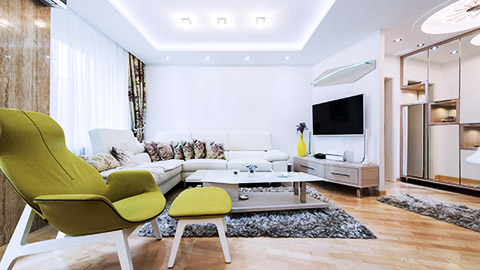
Ambient lighting can be achieved through a variety of light fixtures, such as ceiling-mounted fixtures, recessed lighting, or wall sconces. The function of ambient lighting is to provide a comfortable level of illumination that allows people to move around the space, performing basic tasks and socialising.
Task Lighting
Task lighting or ‘office lighting’, is focused on a specific area where a task is being performed, such as reading, cooking, or working. It provides focused illumination that is bright enough to make the task easier to perform, without having to increase the ambient light level of the room.

Task lighting can be achieved through a variety of light fixtures, such as desk lamps, under-cabinet lighting, or pendant lights.
Accent Lighting
Accent lighting is used to highlight or accentuate a particular feature or object in a space, such as artwork, sculptures, or architectural details. Accent lighting creates visual interest and adds depth and texture to a space.
Effective accent lighting requires the installation of three times more light on the focal point than ambient lighting generally provides. Accent lighting can be achieved through a variety of light fixtures, such as spotlights, track lighting, directional recessed fixture or downlight, wall sconce fixtures.
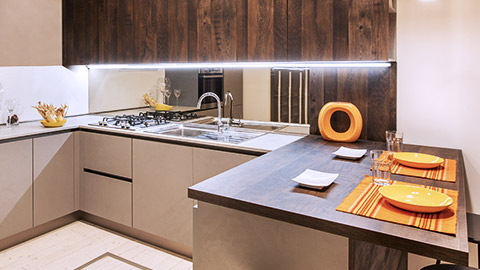
In summary, ambient lighting provides general illumination to a space, task lighting focuses on specific areas where tasks are being performed, and accent lighting highlights particular features or objects in a space. By combining these three types of lighting, designers can create a well-lit and visually interesting space that is both functional and aesthetically pleasing.
You must be clear about the purpose of a room before planning the lighting. A good lighting plan maximises the use of all three lighting types to illuminate a room depending on function and style. Start with ambient lighting, then identify areas where there will be a need for task and accent lighting.
Self-directed Learning
- Choose a space (e.g., office, factory, living room, kitchen, bedroom) where lighting plays an important role in creating a comfortable and functional environment.
- Search for a photo of the space you have chosen that showcases the use of ambient lighting, task lighting, and accent lighting.
- Answer the following questions:
- What is the purpose of the space and how does lighting contribute to that purpose?
- What type of ambient lighting is used in the space and how does it create a certain mood or atmosphere?
- What type of task lighting is used in the space and how does it enhance functionality?
- What type of accent lighting is used in the space and how does it highlight specific features or objects?
- Are there any other types of lighting used in the space, such as decorative lighting or natural lighting?
- Create a presentation or report that includes the photo you found and your answers to the questions above. Use the photo to illustrate your points and make sure to cite your sources.
- Share your presentation or report on the class forum and discuss your findings. What similarities and differences did you notice between the different spaces? What new insights did you gain about the importance of lighting in creating functional and comfortable environments?
